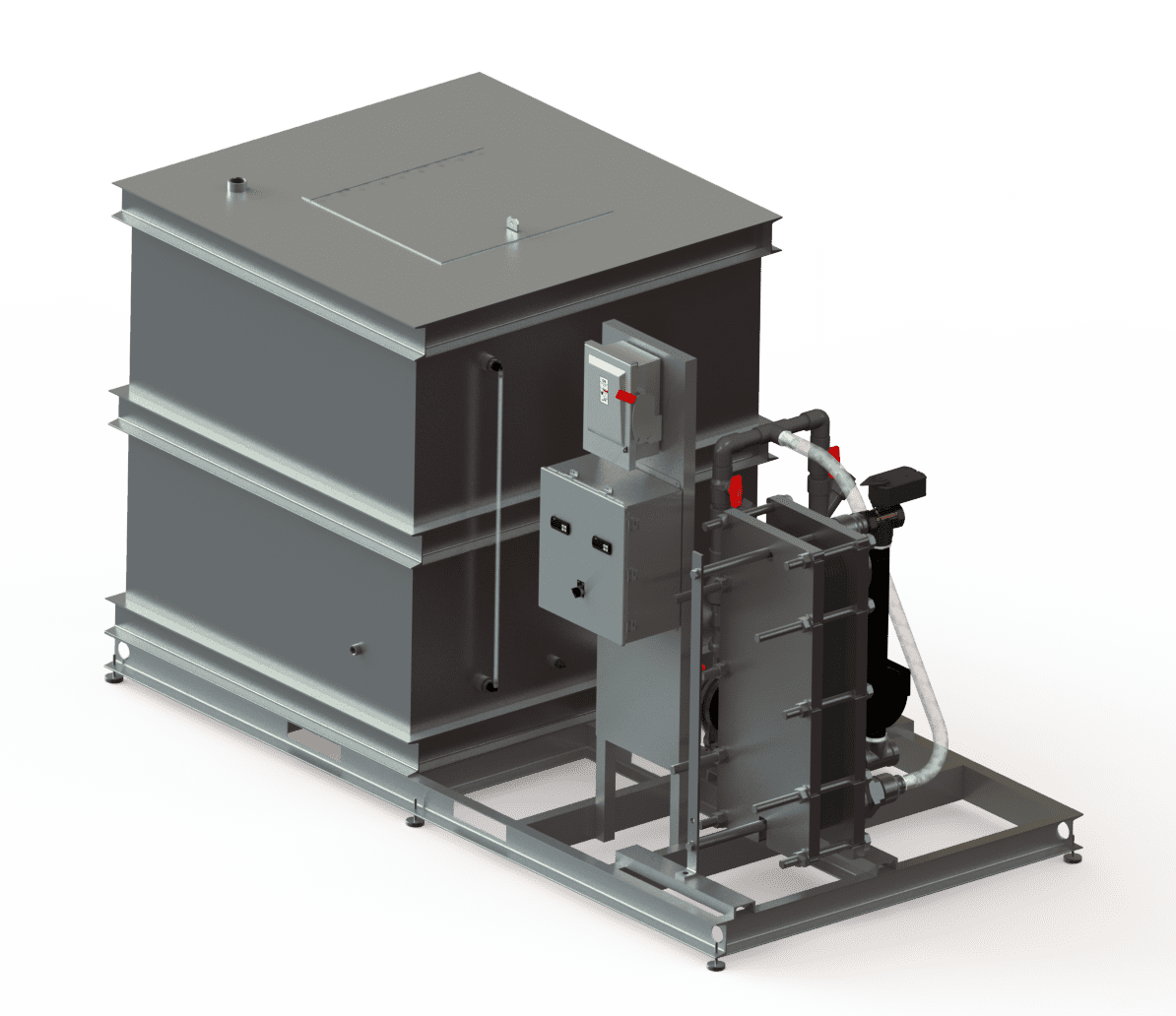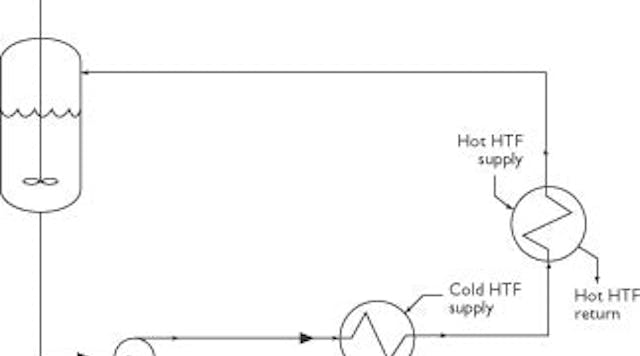How DVS Heat Transfer Systems Are Making Phase Change Materials More Efficient Than Ever
The Function of Heat Transfer Equipments in Sustainable Power Solutions for the Future
Heat transfer systems are essential in the pursuit for sustainable energy solutions. They enhance thermal energy management, boosting the efficiency of sustainable modern technologies. By employing systems like convection, radiation, and transmission, these systems lessen power losses. Their role in solar thermal and geothermal applications is especially significant. As advancements emerge, the potential for more advancements increases crucial concerns about future energy strategies. What growths will form the landscape of sustainable energy?
Recognizing Heat Transfer Solutions

The Value of Thermal Power Administration
Reliable thermal power administration is important for taking full advantage of energy effectiveness and reducing waste in numerous systems. By regulating temperature level and maximizing Heat transfer processes, organizations can noticeably reduce power usage and functional prices. Effective administration entails the implementation of sophisticated technologies and practices that monitor and control thermal conditions within systems, ensuring that energy sources are utilized efficiently. In enhancement, correct thermal power administration adds to minimizing greenhouse gas exhausts, straightening with international sustainability objectives. It additionally boosts system integrity and efficiency, resulting in improved product high quality and longer tools lifespan. Ultimately, focusing on thermal energy monitoring is an essential step towards developing more sustainable power solutions and promoting a liable strategy to power consumption in property and industrial contexts.
Applications of Heat Transfer in Renewable Power
While different renewable resource resources promise sustainability, the reliable application of Heat transfer plays an essential duty in their efficiency. In wind energy systems, Heat transfer is utilized for turbine component air conditioning, improving performance and long life. Geothermal power counts on effective Heat exchange between the earth's subsurface and the fluid distributing in the system, taking full advantage of energy extraction. Biomass power procedures also benefit from Heat transfer, as it aids in converting natural materials right into useful gas through pyrolysis and gasification. Additionally, in hydropower, keeping perfect temperatures in reservoirs can enhance energy outcome. Each of these applications shows the crucial importance of Heat transfer systems in improving renewable resource innovations, eventually contributing to a more sustainable energy future.
Enhancing Solar Thermal Power Performance
As solar thermal power systems remain to advance, improving their efficiency has come to be important for making the most of energy outcome. Advancements in Heat transfer innovations, such as boosted thermal storage materials and ingenious Heat exchangers, play a considerable duty in enhancing performance. By using sophisticated products that have remarkable thermal conductivity, systems can record and transfer Heat a lot more successfully. Additionally, incorporating monitoring systems that follow the sun's path warranties that collectors obtain ideal solar exposure throughout the day. Utilizing nanotechnology in solar absorbers can better boost power absorption prices. Moreover, integrating automated control systems assists manage temperature levels and manage power circulation effectively, resulting in minimized losses and enhanced overall system efficiency. These enhancements lead the way for more sustainable solar thermal power services in the future.
Geothermal Heating: A Sustainable Service
Geothermal home heating presents a practical choice for lasting power, providing significant ecological benefits through lowered greenhouse gas emissions. Its effectiveness and cost-effectiveness make it an appealing alternative to traditional heating unit. Difficulties related to implementation needs to be addressed to maximize its prospective impact.
Ecological Advantages of Geothermal
Although traditional heating approaches add considerably to greenhouse gas discharges, geothermal home heating provides an engaging option that decreases environmental influence. By harnessing the Planet's inner Heat, geothermal systems utilize a renewable resource source, considerably reducing dependence on nonrenewable fuel sources. This method produces minimal carbon exhausts, making it a cleaner option for residential and industrial home heating. Furthermore, geothermal systems advertise power efficiency, as they need much less power contrasted to standard heating unit. DVS Heat Transfer Systems. The utilization of geothermal power additionally aids in reducing air pollution, improving neighborhood air top quality and public health. As a lasting solution, geothermal heating sustains environment change reduction efforts, placing itself as a necessary component in the change towards a greener future
Efficiency and Cost-Effectiveness
How does geothermal home heating determine up in regards to effectiveness and cost-effectiveness compared to traditional furnace? Geothermal home heating shows premium effectiveness, frequently attaining a coefficient of performance (COP) of 3 to 5, implying it produces three to 5 units of Heat for every system of power consumed. This effectiveness equates into reduced operating expenses, especially in areas with steady geothermal resources. Initial setup prices can be higher than traditional systems; nonetheless, long-term cost savings on power costs and reduced maintenance expenditures can balance out these upfront investments. In addition, several federal governments incentivize geothermal systems via rebates and tax obligation credit scores, enhancing their cost-effectiveness. On the whole, geothermal heating arises as a lasting and financially feasible choice to even more traditional home heating options.
Implementation Difficulties and Solutions
Various challenges can restrain the prevalent execution of geothermal furnace, regardless of their clear advantages as a lasting power remedy. High first installation expenses typically hinder property owners and investors, making financing a significant barrier. In addition, the geographical restrictions of ideal geothermal websites limit accessibility in specific regions. Neighborhood laws and permitting procedures can additionally complicate task growth, resulting in hold-ups. Moreover, public recognition and understanding of geothermal systems stay low, hindering approval. To address these obstacles, targeted education and learning campaigns can enhance public understanding, while government rewards can minimize monetary burdens. Teaming up with regional authorities to simplify regulations may assist in smoother project authorizations, inevitably promoting the fostering of geothermal heating as a feasible, sustainable power option.
Technologies in Heat Transfer Technologies
Advancements in Heat transfer modern technologies play a vital duty in enhancing power performance and sustainability. Advanced Heat exchangers and phase change products go to the leading edge of these advancements, providing significant improvements in thermal administration. These modern technologies not only optimize energy use but additionally contribute to lowering ecological influence in numerous applications.
Advanced Heat Exchangers
Advanced Heat exchangers play a vital function in enhancing energy efficiency throughout different applications in sustainable power services. These gadgets promote the transfer of Heat in between 2 or more fluids, considerably lowering energy intake in processes such as commercial heating, cooling, and power generation. Innovations in materials and style, such as using nanofluids and portable setups, have brought about enhanced thermal efficiency and decreased dimension requirements. In addition, improvements in digital surveillance and control systems enable maximized procedure, additional increasing performance. By decreasing waste Heat and original site maximizing power recovery, advanced Heat exchangers contribute to lower carbon footprints and sustain the shift towards environmentally pleasant technologies. Their proceeded development is essential for achieving global power sustainability objectives.
Stage Modification Products
The combination of stage change products (PCMs) into Heat transfer technologies stands for a considerable advancement in energy management and effectiveness. PCMs soak up and launch thermal energy during their stage adjustments, making it possible for reliable temperature law in structure materials and energy systems. By storing excess Heat during optimal durations and launching it when demand rises, PCMs contribute to fill moving and energy conservation - look at more info DVS Heat Transfer Systems. This capability enhances the efficiency of renewable resource systems, especially in solar thermal applications. Furthermore, PCMs can enhance the thermal convenience of indoor atmospheres, minimizing reliance on conventional heating and cooling down methods. As advancements in PCM solutions remain to emerge, their role in sustainable power solutions is poised to expand, offering appealing avenues for future study and application

Future Leads for Heat Transfer in Sustainable Energy
As the demand for sustainable energy remedies remains to increase, the role of Heat transfer systems is ending up being significantly crucial in forming future technologies. Developments in materials and styles are expected to boost effectiveness in Heat transfer, decreasing energy losses in numerous applications. The assimilation of innovative thermal storage systems, such as stage adjustment products and thermochemical storage, will enable far better administration of power sources. Study right into nanofluids and biomimetic Heat exchangers might additionally maximize thermal performance. Furthermore, the fostering of clever innovations will allow for real-time surveillance and adaptive control of Heat transfer procedures. These developments are poised to significantly add to the overall efficiency and sustainability of power systems, leading the way for a more energy-efficient future.
Frequently Asked Inquiries
Just How Can People Implement Heat Transfer Solution in the house?

People can implement Heat transfer systems in your home by mounting energy-efficient home appliances, utilizing glowing heating, and maximizing insulation. These measures improve energy efficiency, decrease costs, and promote sustainable techniques in domestic environments.

What Are the Prices Connected With Setting Up Heat Transfer Solutions?
The expenses related to mounting Heat transfer systems differ extensively, generally including devices, setup labor, and upkeep. Aspects such as system kind, home dimension, and regional policies considerably influence the general expenditure involved.
Are There Government Incentives for Heat Transfer System Installations?
Government motivations for Heat transfer system installations vary by area and can consist of tax obligation gives, credit scores, and refunds. These economic advantages aim to urge fostering, This Site ultimately advertising energy efficiency and reducing ecological effect within communities.
Exactly How Do Heat Transfer Systems Influence Energy Costs?
Heat transfer systems especially affect energy bills by enhancing power performance. By boosting the transfer of Heat, these systems minimize energy intake, bring about reduced energy expenses and producing a much more lasting technique to energy monitoring.
What Maintenance Is Required for Heat Transfer Solutions?
Upkeep for Heat transfer systems includes normal examinations, cleaning of parts, checking liquid degrees, ensuring appropriate insulation, and changing worn components. These jobs help preserve performance, prevent failures, and prolong the system's functional life-span.
These systems assist in the activity of thermal energy from one medium to one more, making it possible for the transfer of Heat for air conditioning, heating, or energy generation objectives. Geothermal power relies on effective Heat exchange in between the earth's subsurface and the fluid distributing in the system, maximizing power removal. Additionally, geothermal systems promote energy performance, as they need less energy contrasted to traditional heating systems. Advanced Heat exchangers play a crucial function in improving power performance throughout numerous applications in lasting power solutions. Heat transfer systems notably influence power bills by optimizing energy efficiency.